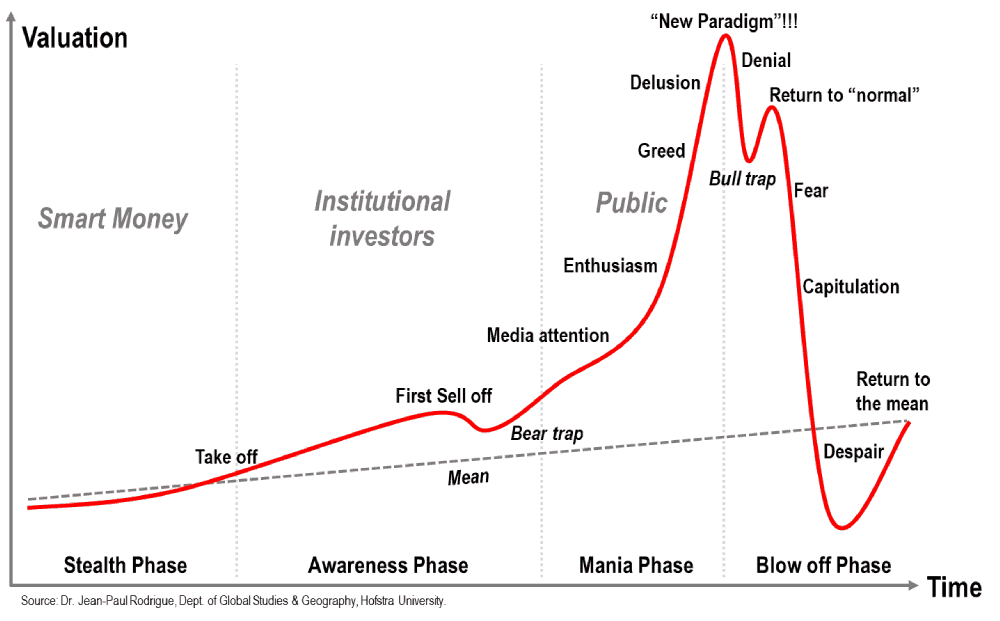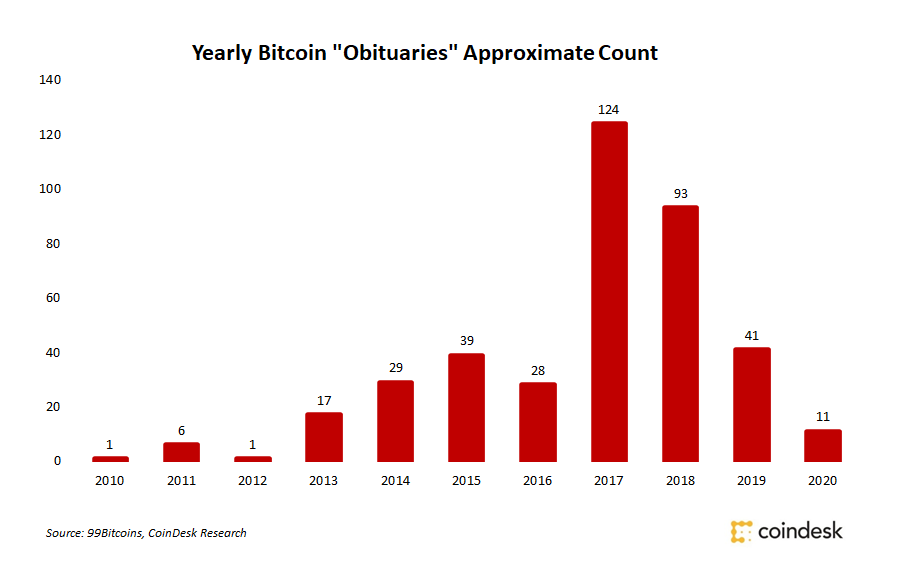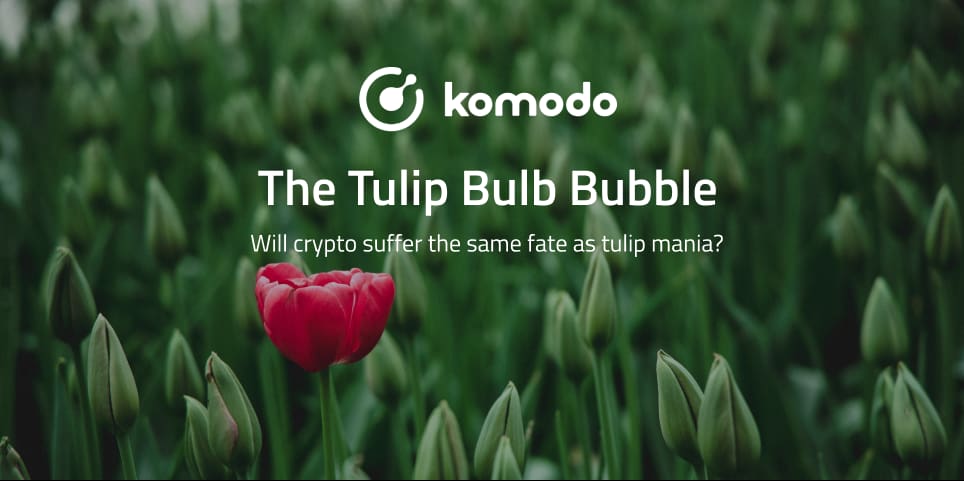Explaining the events that led to the tulip bulb bubble. Will the crypto market follow the same path?
Background
The term ‘bubble’ was coined around the year 1634 when the tulip flower market was popular in the Netherlands. Tulips were imported from England and Switzerland to the Netherlands where they became the object of spectacle - nice to look at and nice to hold. This was the catalyst for tulip mania.
A variety of tulip bulbs were admired and cultured for their rarity. They first grew admiration among the wealthy class and then increasingly among the middle class and merchant sellers. The variants of the flowers created competition for rare bulbs that were on demand by buyers.
The tulips themselves were attractive to buyers, while the growing demand for tulip bulbs attracted investors that were not interested in the flowers at all. The idea of a future was created by investors to bet on a price without having to buy or export the actual product.

Tulip Market Rise and Crash
In just almost three years, the tulip markets had gained such confidence by speculators who were able to gain wealth in a very short time. The market allowed investors to buy rare tulips bulbs traded on the Stock Exchange of Amsterdam by 1636. By January 1637, the price of a rare tulip bulb became worth as much as an equivalent of what would be the equivalent of $750,000 today. People would take credit and trade property for cash just to buy tulips on the stock market.
By 1637 buying price of tulip bulbs had risen far beyond the original value of the flowers. In February 1637, buyers could no longer pay the high prices. People also quickly lost interest in buying when the tulip season was over. Very quickly merchants could not sell these bulbs at a fraction of the price they had bought them. Speculators raced to sell in a panic before the flower bulb became worthless. People had lost their property and defaulted on loans, with this information announced publicly in the town hall.
Tulip vendors approached the courts in an attempt to enforce contract obligations. The courts ultimately found that these were classified as gambling debts. The courts ruled that there was no legal jurisdiction for gambling. The events had an enormous impact on the Dutch economy and caused mass poverty in a very short time. Tulip investors had too much confidence in the market without considering its seasonal nature and the fact that these markets did not have long-term sustainability.

Is The Crypto Market The Next Tulip Bubble?
In September 2017 Jamie Dimon, CEO of JPMorgan said that Bitcoin is a fraud “worse than tulip bulbs.” Some prominent investors have compared Bitcoin to a financial bubble. The concept of a financial bubble depends on an intrinsic or stable value that is associated with a product or asset. If the value increases beyond its stable value then this is called a bubble.
The price rise attracts investors who are motivated to buy and hold and see this asset as financial investments, and the bubble is said to pop when there are no more willing buyers. The sellers still profit while the investors who are still holding on to the asset are the losers.
Can Bitcoin or the crypto market be compared to a financial bubble? The price of bitcoin has increased exponentially since its inception. But no real intrinsic value is associated with Bitcoin or other cryptocurrencies. Although the same can be said for fiat money which abandoned the gold standard nearly a century ago, the main difference between cryptocurrency and fiat currency is the feature of price stability.
Volatility makes cryptocurrency popular today and attractive to speculators. Speculators identify as investors who profit from volatility. The increase in value relative to other cryptocurrencies or fiat currencies makes crypto trading so alluring.
In 2019, it was shocking to many when JPMorgan has released JPM Coin - a stablecoin tied by US Dollars, hence being a currency with a stable value. JP Morgan also bought €3,000,000 worth of Bitcoin XBT (exchange-traded notes) which essentially treats Bitcoin as an underlying asset. While Dimon believes in the future of distributed ledger technology, his stance on Bitcoin specifically hasn't changed.
The Value of Cryptocurrencies
Cryptocurrencies are classified as currencies because they are designed to be used for transactional purposes. They happen to be very volatile and ideal for trading. It’s beneficial that there is no intrinsic price we associate with these currencies.
Cryptocurrencies were originally designed to be used as money and not designed to be a financial asset. It’s possible that the price of Bitcoin, like any other cryptocurrency, can reach a value of close to zero. Ultimately, the price of Bitcoin and other cryptocurrencies is determined purely by supply and demand. So as long as there is a use case for these coins, the price can’t remain at zero.
Although there have been many flash crashes where the price of Bitcoin plummeted suddenly, the markets have consistently recovered within a relatively short time window. Crypto, just like other financial assets, has bull markets and bear markets. There are numerous risks with buying crypto, and even the 2018 crash at the time looked like the equivalent of the tulip bubble. Zooming out, however, it’s easy to see the upside potential of this technological and financial innovation.
📧Komodo Newsletter
If you'd like to learn more about blockchain technology and keep up with Komodo's progress, subscribe to our newsletter. Begin your blockchain journey with Komodo today.

